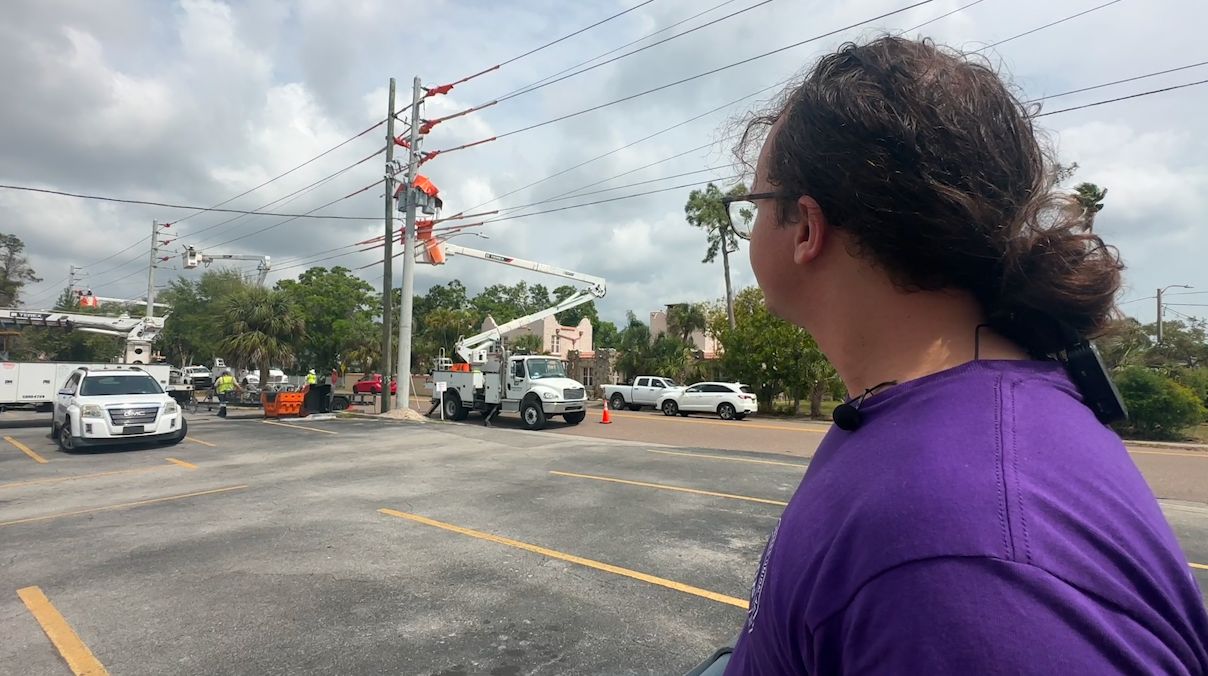TAMPA, Fla. — This year marks the 75th anniversary of the Housing Act of 1949, which was an expansion of the Housing Act of 1937. The act resulted in an increase in the number of public housing agencies, such as the Tampa Housing Authority, and widespread construction of public housing owned by the United States Department of Housing and Urban Development.
Dr. Carolyn Collins said these housing subsidy programs have had a lasting impact.
Collins and her husband raised their two sons in Carver City — a Black suburb developed in 1956.
She said many of the homeowners came from low-income public housing projects.
Collins believes her generation benefited from the program and that public housing then promoted upward mobility.
“Everybody got a home,” she said. “We saw our parents, and we enjoyed living in public housing, but we knew that wasn’t the end.”
Her family were some of the first Black residents to live in North Boulevard homes on Main Street in the 1940s and 50s.
“I remember my mother paying $25 a month,” Collins recalled.
Back then, she said rent was assessed based on your income and how many people lived in your home.
At first, the program was intended to clear blight and slums and create job opportunities.
“The kids that came out of public housing went to college,” said Collins.
Tampa’s Lincoln Gardens was designated for Black World War II veterans who were barred from living at the nearby military base because of Jim Crow laws.
“People asked why the Jackson house was as it was,” said Collins. “Military families (...) had to stay in those places, but just couldn’t bring their families.”
According to the National Low Income Housing Coalition, post-war production of public housing like Hillsborough County’s Progress Village increased.
However, The NLIHC says public housing was used as a tool to advance segregation with the construction of segregated public housing continuing in the 1960s and 70s.
The passing of the Fair Housing Act in 1968 was intended to address that problem.
Tampa Bay History Center’s Black History Curator Fred Hearns also lived in the North Boulevard homes as a baby.
Hearns says housing was an issue that Dr. Martin Luther King Jr. was passionate about.
“The Fair Housing Act was passed immediately one week after the assassination of Dr. Martin Luther King. King had been pushing for what he called open housing. There were demonstrations starting back in the 1960- 65 era. However, Congress did not pass the Fair Housing Act until Dr. King was killed.”
Collins, who is the former President of the Hillsborough chapter of the NAACP, said the organization played a pivotal role in the cause of equal housing.
During his tenure as NAACP field director from 1952 to 1966, Robert W. Saunders pushed for African Americans to be involved in the urban redevelopment of Tampa.
“There was a bit of cry from the African-American community that they did not want the public housing to be on top of each other,” Collins said.
In 1974, a moratorium on public housing spending was placed by President Richard Nixon. Public housing eventually declined.
It was then that federal housing subsidies shifted to housing vouchers and what is known today as Section 8.
“Section 8 don’t teach you because they are giving you what you need,” Collins said.
The NIHLC says the HOPE VI program was implemented to replace run-down federal housing with mixed-income homes.
However, many evictions were forced throughout the 90s and 2000s when tens of thousands of housing units were demolished, with only half being replaced.
Tampa’s North Boulevard homes were demolished in 2017.
“Gentrification in Tampa is very bad and is still going on,” Collins expressed. “That’s what we felt happened. When they start taking down public housing. We fought and fought with our leadership and asked not to tear down those well-built homes, but to retrofit them, you know, to remodel, to restore, but they end up tearing them down.”
While Collins said the homes needed upgrading, in her opinion, the public housing program itself wasn’t broken.
She said more funding and better management could have afforded more Black families the opportunity to create generational wealth like her own.









